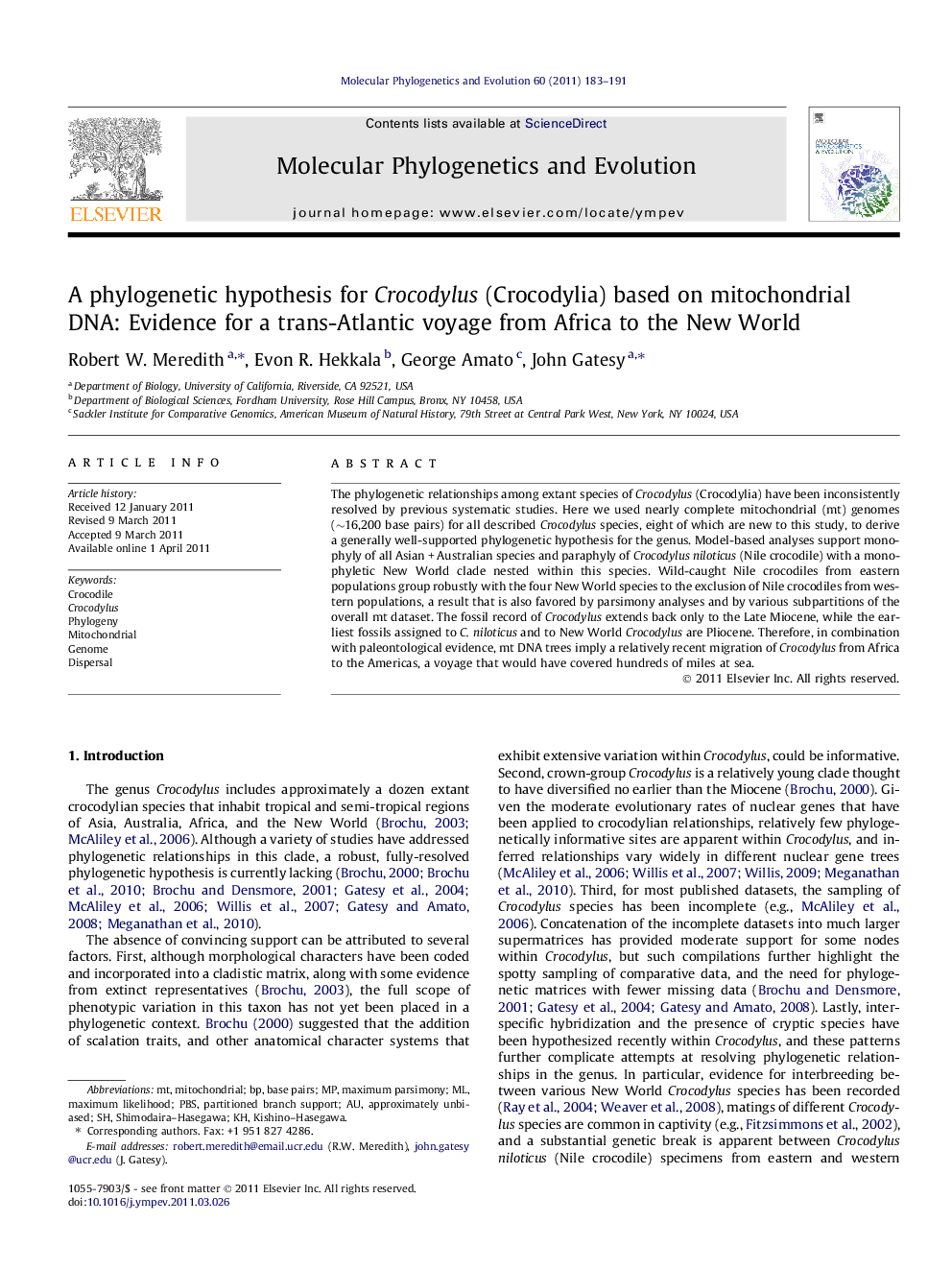| کد مقاله | کد نشریه | سال انتشار | مقاله انگلیسی | نسخه تمام متن |
|---|---|---|---|---|
| 2834197 | 1164298 | 2011 | 9 صفحه PDF | دانلود رایگان |

The phylogenetic relationships among extant species of Crocodylus (Crocodylia) have been inconsistently resolved by previous systematic studies. Here we used nearly complete mitochondrial (mt) genomes (∼16,200 base pairs) for all described Crocodylus species, eight of which are new to this study, to derive a generally well-supported phylogenetic hypothesis for the genus. Model-based analyses support monophyly of all Asian + Australian species and paraphyly of Crocodylus niloticus (Nile crocodile) with a monophyletic New World clade nested within this species. Wild-caught Nile crocodiles from eastern populations group robustly with the four New World species to the exclusion of Nile crocodiles from western populations, a result that is also favored by parsimony analyses and by various subpartitions of the overall mt dataset. The fossil record of Crocodylus extends back only to the Late Miocene, while the earliest fossils assigned to C. niloticus and to New World Crocodylus are Pliocene. Therefore, in combination with paleontological evidence, mt DNA trees imply a relatively recent migration of Crocodylus from Africa to the Americas, a voyage that would have covered hundreds of miles at sea.
Figure optionsDownload as PowerPoint slideHighlights
► We examine crocodile phylogeny using a large mitochondrial dataset.
► All analyses support monophyly of New World Crocodylus.
► The four New World species are derived from within Crocodylus niloticus (Nile crocodile).
► This pattern suggests a recent trans-Atlantic dispersal from Africa to the Americas.
Journal: Molecular Phylogenetics and Evolution - Volume 60, Issue 1, July 2011, Pages 183–191